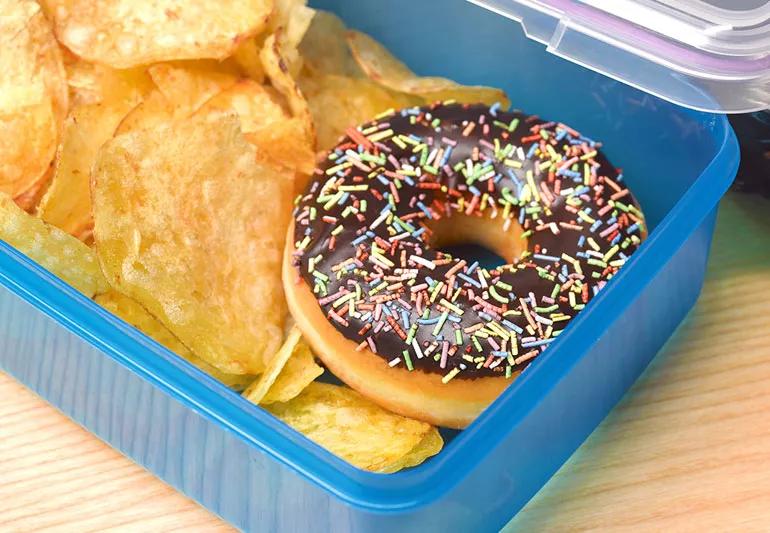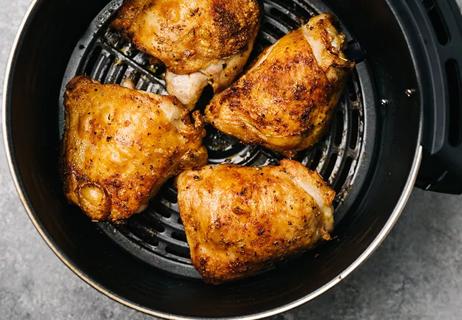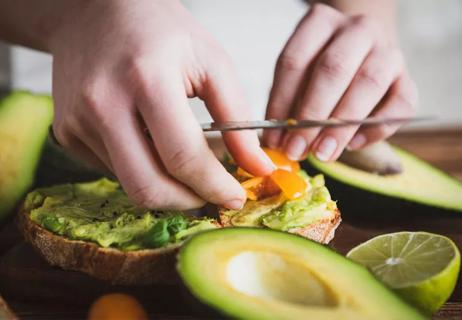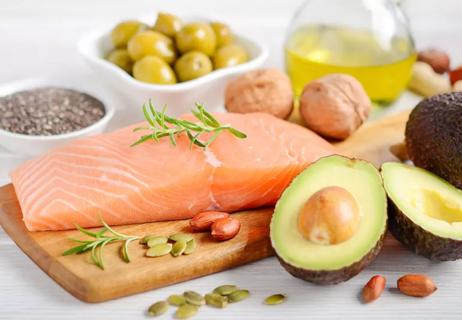Trace amounts of trans fat can still lurk in your foods, and they can add up

Artificial trans fats have long been understood to be a major health hazard.
Advertisement
Cleveland Clinic is a non-profit academic medical center. Advertising on our site helps support our mission. We do not endorse non-Cleveland Clinic products or services. Policy
And in 2015, the U.S. Food and Drug Administration (FDA) made a major step toward improving the nutritional content of our processed foods.
The organization deemed that partially hydrogenated oils — the major source of trans fats in manufactured foods — were no longer considered “generally recognized as safe (GRAS).”
By January 2020, U.S. food manufacturers would no longer be allowed to sell foods containing partially hydrogenated oil. That effectively banned trans fats from being added to foods made or sold in the United States. Researchers have called it a major public health achievement.
But that’s not the entire story.
Because, even after being banned, trans fats can still be found in small amounts in some packaged foods. And the toll on your health can add up fast.
“Foods can still be sold legally if they contain a half-gram of trans fat or less per serving,” explains Anthony DiMarino, RD, LD. “And you won’t see that partial gram listed on the nutritional label, so you might not even realize it’s there.”
But why are trans fats such a problem? And will a fraction of a gram of trans fat really matter to your health? DiMarino explains.
Trans fats are the worst of the worst when it comes to fat in your diet. While unsaturated fats are an important part of a balanced diet, and saturated fats can be OK in small amounts, there’s no amount of healthy artificial trans fats.
Advertisement
“Our bodies don’t need trans fats to operate at all,” DiMarino explains. “It has no health benefits and has been proven to be detrimental. That’s what led to it being banned in the U.S.”
Artificial trans fats are created during the food-manufacturing process.
“You start with an oil that’s a liquid at room temperature, add hydrogen to it, and it becomes a solid,” he continues.
But why?
The World Health Organization (WHO) says partially hydrogenated oils were first used in the food supply in the early 1900s to replace butter and lard.
That’s because, the American Heart Association explains, partially hydrogenated oils are inexpensive and last longer. Using partially hydrogenated oil in a restaurant fryer, for example, means you can use the same oil over and over again. That keeps costs down and makes the kitchen run quicker.
It’s important to note that not all trans fats are created during food production. Some trans fats occur naturally too, but in very small amounts.
Naturally occurring trans fats (also called ruminant trans fats) can be found in some animal products, like milk and meats. They’re created in the animal’s body. One cup of 2% cow’s milk, for example, contains 0.2 grams of trans fat. And there are about 0.1 grams of trans fat in a pork chop.
Research on the effects of naturally occurring trans fats is ongoing. But DiMarino says the artificial trans fats are the ones that most people should worry about more.
Consuming artificial trans fat has been shown to be connected to a range of concerns. Most notably, they can do a number on your heart health.
“When consumed in large quantities, trans fats can build up in your bloodstream,” DiMarino further explains. “They increase your LDL cholesterol, which is the cholesterol that brings about heart disease. They also lower your HDL, which is the heart-protective cholesterol.”
Additionally, trans fats in your bloodstream can lead to blocked arteries, coronary artery disease and inflammation.
Researchers have also connected trans fat intake to an increased risk of prostate cancer and colorectal cancer. And trans fat intake during pregnancy may be linked to lower birth weight.
Even after the FDA’s ban on artificial trans fats, food manufacturers still have some leeway. It turns out that “no trans fats” really could mean something more like “just a bit of trans fat.” And that bit may actually matter big.
“It’s a matter of rounding down,” DiMarino says. “Food can be sold and labeled as not having zero trans fat if there is less than 0.5 grams per serving.”
Advertisement
And that “per serving” part is really important.
Because — as anyone who’s ever popped open a “party-size” bag of chips knows — the serving size on a nutritional label doesn’t always align with how much you actually eat.
“Say the serving size for a slice of cake is a three-inch square. And that square contains 0.4 grams of trans fat,” DiMarino illustrates. “But you eat a 6-inch square or a 9-inch square. Now, you’ve doubled or tripled your intake of ‘acceptable’ trans fat. And you don’t even know you’ve had any at all.”
So, if it’s not on the nutritional label, how do you know if your food has trace amounts of trans fat?
Look at the ingredients list. If your food contains “partially hydrogenated oil” that’s a surefire sign that trans fat is hiding in there.
DiMarino says trans fats are most commonly hiding in packaged baked foods, like pies and pie crusts, pastries and cookie dough. They may also be in your shortenings and spreads like margarine, packaged frosting or peanut butter. And fried foods, like French fries and tater tots are likely culprits, too.
Remember, the FDA ban only covers foods made or sold in the U.S. So, if you’re traveling abroad or buying foods from other countries, you’ll want to be extra vigilant.
Advertisement
The WHO says some other countries have similar bans on trans fats, including:
The U.S. ban on trans fat is a big win for improving health in the country. But it’s not foolproof. And you still do your due diligence to make sure you know what you’re eating.
The absolute best way to ensure you’re keeping trans fats out of your diet? Stick with whole, unprocessed foods and plant-based foods as much as possible.
“Plant-based, natural foods are always going to be your healthiest choices,” DiMarino encourages. “Fruits, vegetables, nuts and seeds are the basis of a healthy eating plan. That’s the best way to avoid any kinds of trans fats and get all the vitamins and nutrients your body needs.”
Advertisement
Learn more about our editorial process.
Advertisement

It’s best to avoid regular use of the ‘beef drippings,’ given high levels of saturated fat

This healthy oil is packed with nutrients and great for roasting, drizzling and even baking

The popular cooking method can help you cut down on fat without losing the flavor and texture of your favorite foods

EVOO is full of antioxidants and has anti-inflammatory properties, both of which aid your body in multiple ways

This powerhouse oil fights fine lines and wrinkles, soothes sunburn and a whole lot more

The best cooking oils contain healthier fats, and EVOO wins best in show

You need the right kinds of fats in your diet, but moderation is still key

Boost your health by eating more plant-based foods and fish

If you’re feeling short of breath, sleep can be tough — propping yourself up or sleeping on your side may help

If you fear the unknown or find yourself needing reassurance often, you may identify with this attachment style

If you’re looking to boost your gut health, it’s better to get fiber from whole foods